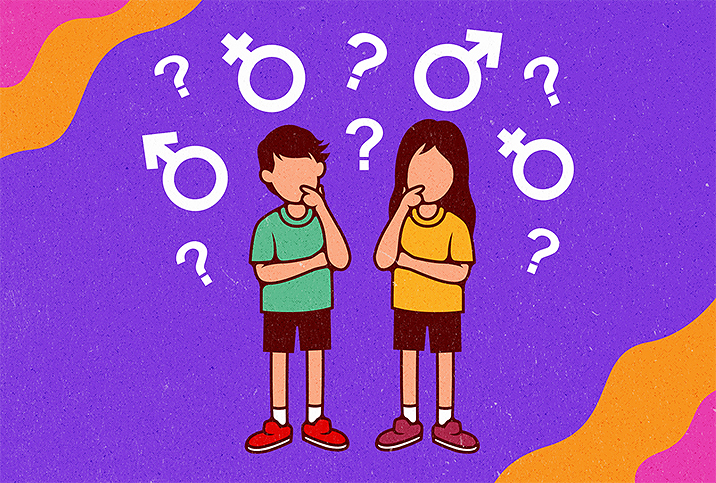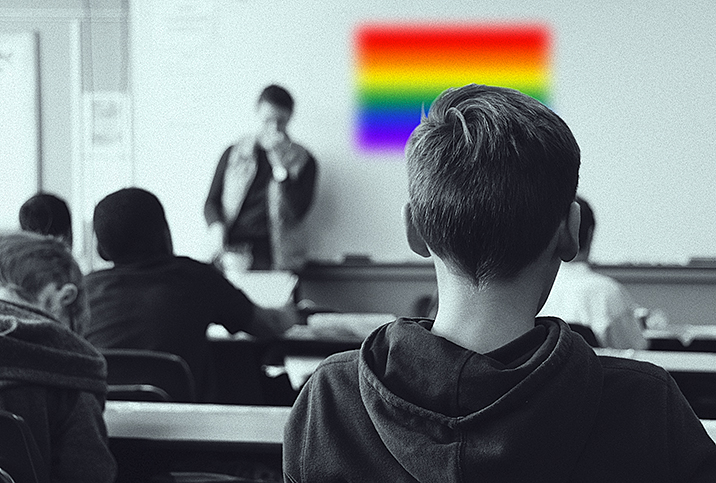What Teaching Sex Ed Looks Like During a Pandemic

In the U.S., only 30 states require sex education in public schools and only 22 of them require medical accuracy. And despite the challenges created by nationwide campus closure due to the pandemic, continuing to teach sex ed is vital.
According to a study published in the Perspectives on Sexual and Reproductive Health, experts are discussing pandemic-related learning gaps and the negative impacts of isolation on youth sexual health as students have faced reduced privacy as they spend more time at home and have experienced an overall lack of opportunities to socialize.
So how can educators create inclusive curricula in order to ensure that their students continue to receive the sex ed they deserve?
Despite the inevitable frustrations that accompany distance learning, some educators find online classes allow for increased accessibility in many ways. Teachers speaking with The Lily, a Washington Post publication focused on gender, said going virtual has allowed them to reach kids in more geographic areas and has allowed their LGBTQIA+ students to virtually attend events (like a queer prom) that they couldn’t safely attend in-person.
Brittany McBride, associate director of sexuality education at Advocates for Youth, said this unexpected good news is the result of the effort on the part of educators who have gotten creative with the limited resources available to them.
“Folks were delivering lessons via television channels their schools had access to,” McBride said. “At Advocates for Youth, we put our free curriculum on Google Classroom where thousands of teachers have been able to share it with students.”
Another resource helping to educate students during the pandemic is AMAZE.org, a project of Advocates for Youth that offers animated, funny, kid-friendly sex ed videos. Currently, AMAZE is asking parents to participate in their “Askable Parent” challenge.
“We’re providing content to adults to encourage them to become sources of information for young people,” McBride said. Curriculum content hasn’t changed greatly from pre-pandemic sex education, McBride said, though she noted some educators have highlighted similarities between asking someone to wear a mask and asking someone to wear a condom.
Rachel Lotus, director of The Talk in New York City, a progressive sexuality education program for tweens, teens, and parents, said the topic of sexting is more prevalent in her workshops.
“Youths are interacting on social media, their phones and online school platforms all day long during the pandemic,” Lotus said, “and we need to properly equip them with skills they need to safely and respectfully navigate this new terrain.”
An obstacle of teaching sex ed during the pandemic—and for many families living in quarantine—is lack of privacy. When it comes to sex education at home on Zoom, feeling self-conscious can disrupt student learning.
“Their parents and younger siblings may be listening in,” McBride said. “Educators are all wondering, ‘How do we provide a safe space for kids to ask us questions like they did in-person? How do we maintain student privacy?’”
While this lack of privacy is a strain on families and students, it’s creating new opportunities for parents to engage in conversations about sexuality and health. Some parents are taking on more active educator roles during distance learning, while others find themselves answering sex-related questions for their teens after binge-watching shows like "Big Mouth" or "Schitt’s Creek" while quarantined together. In any of these situations, McBride and Lotus’ advice to fellow parents remains the same: Be your child’s resource and support system and be patient with yourself.
“As a parent who has been home with my kids—I know it’s a lot. To take on these subjects is a huge undertaking, so we need to give ourselves some grace,” McBride said. “Understand that not all of us are sex educators—and some of us didn’t even get sex ed classes when we were in school ourselves. It’s okay to say, ‘I don’t know’ or ‘I’ll get back to you.’”
Lotus added, “Talking to teens and tweens about things like consent, sexting, and porn can be really daunting if you don’t have the language.”
But the mom of three has a few tips to ease the awkwardness for everyone involved. First, let kids control the communication whenever possible. If your child approaches you with a story or question, listen then and there, no matter what you’d been doing. Second, couple conversations with other activities whenever you can.
“Talk while you’re driving, while you’re out for a walk—these are great moments that sort of diffuse some of that tension and allow you to speak more candidly without the pressure of intimate eye contact,” Lotus said.
And since the majority of kids’ daily lives are now spent online, one of the most important lessons parents can impart to their kids is how to find reliable, trustworthy resources on the internet. Beyond teaching research skills, simply letting your children know they can feel comfortable asking you questions is potentially the most crucial step.
“There are things we can do to make ourselves more available without being experts,” McBride said. If parents respond to their children’s curiosity with open-mindedness and honesty, she added that’s a victory for youth sex education.

















